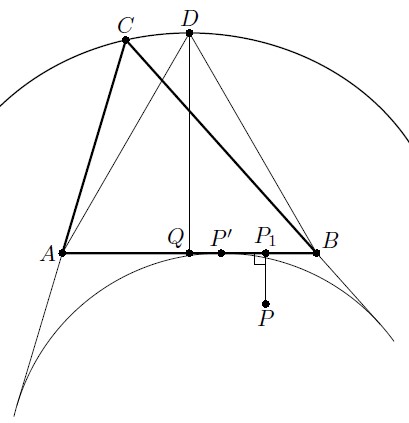Ref: Convex curves with many inscribed triangles maximizing perimeter
Given a planar convex region C. Let P be a variable point on its boundary.
Observations: When C is an ellipse, the variation in the perimeter of the max perimeter inscribed triangle with one vertex constrained to be at P is found to be within around 10% as P runs around C - even when ratio a/b of C tends to infinity (thinking of an ellipse beginning as a circle and then getting stretched along major axis, we have a very 'physical' function of a/b that grows from 1 to just about 1.1 as the a/b goes all the way from 1 (circle) to infinity!). When C is an equilateral triangle, the variation in perimeter of max perimeter inscribed triangle with one node fixed is almost 22%. For a square, this variation is found to be only 5%.
Question: Among all planar convex regions of given area and perimeter, which shapes minimize and maximize the variation in the perimeter of the max perimeter inscribed triangle with one vertex constrained to be at P - as P varies around the boundary of the convex region?
Note 1: One can ask same question with minimum perimeter triangles that contain C such that one side of the triangle has to be a tangent to C at P. And also consider, say inscribed quadrilaterals with 2 vertices fixed.
Note 2: When C is an ellipse, the area of the max area inscribed triangle with one vertex at P remains constant as P moves around boundary of C - at each position of P, the max area inscribed triangle is one with centroid coincident with the center of C and it has C as its Steiner circumellipse.

